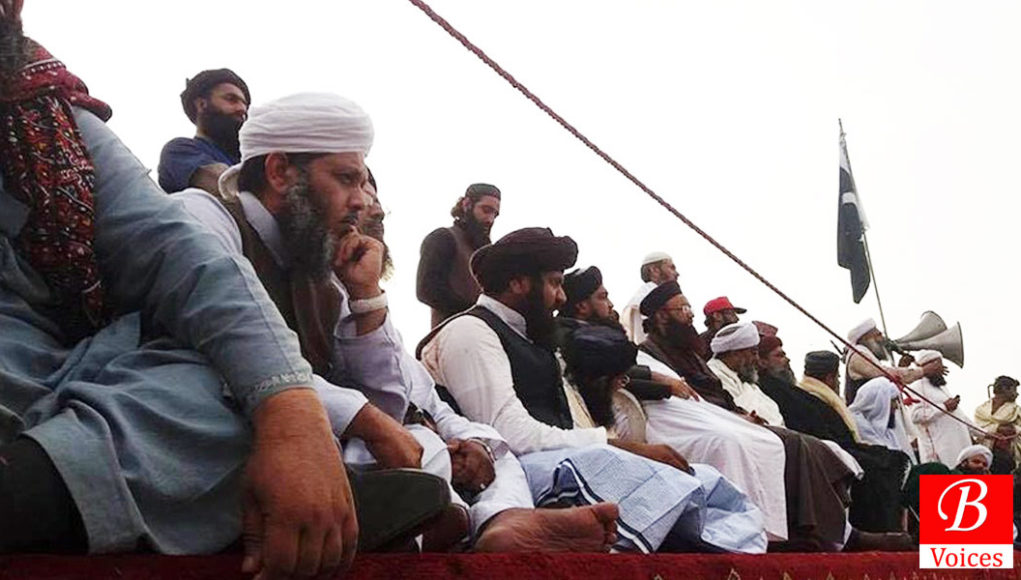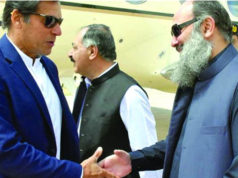The legacy of South Asia demonstrates that Muslims consider themselves to be rightful and justified heirs of the whole of sub-continent. Elites, whether they are political or economic, demonstrated this notion explicitly along with the clergy class. Surprisingly, artists and poets also followed the elitist narrative of a superior nation and proud conquerors. Faiz Ahmed Faiz and Allama Iqbal are proven to be vital threads, more specifically, in the context of Pakistan and Muslim Nationalism.
Faiz Ahmed Faiz describes this as follows;
When we lowered the boat of our existence
Into the river with pain
How powerful our arms were,
How crimson the blood in our veins!
We were sure that after just a few strokes of oars
Our boat will enter its haven.
That’s not how it happened.
Every current was treacherous with unseen maelstorms;
We foundered because the boatman were unskilled;
Nor had the oars been properly tested.
Whatever investigations you conduct;
Whatever changes you bring,
The river is still here; the same boat too.
Now you tell us what can be done.
You tell us how to manage a safe landing.
The fertile land for hegemony and historical legacy led to the two famous cries i.e., ‘Islam is in danger’ and ‘The Islamic Republic of Pakistan.’ This was made keeping in view the previous tremendous rise of Muslim empire and then the sudden steep decline as well. Muslims were, then, not in position to accept any sub-ordinate position and the best possible scenario came out to be the creation of an independent sovereign nation-state.
As per Iqbal Akhund says so;
“The Pakistani Muslim thinks himself as heir to the Muslim empire, descended from a race of conquerors and rulers. There is therefore a streak of militarism in Pakistan’s ethos, even at the popular level.”
The very first representative voice in favour of Muslims was acknowledged in the Luck now Pact (1916) where the idea of separate electorates were conceded. But, the ideological basis of Muslims varied from region to region and from community to community. The blow towards the efforts of M. Ali Jinnah and his ideology of Hindu-Muslim unity came from the elements of Pan-Islamism. The first political use of this term in Hindustan was held by Jamaluddin al-Asadabadi, who is more famously called as ‘Al-Afghani.’ He considered the territorial nationalism as a curse for Muslims and, thus, should be abandoned for good. In this context, Afghani thought of Sir Syed Ahmed Khan as the eternal enemy of Muslims and representative of infidels- the word which he used for British, particularly, and other western powers, generally.
The background of pan-Islamism proved to be productive source for the emergence of Khilafat movement. After the fall of Ottoman Empire, religious elite found their significance much lessened in the presence of princes and landlords who came out to be favourable for British colonialism, strategically. Ultimately, they found refuge in the field of education and put concentration in institutionalized preaching. In this regard, we find different organizations like that of Nadwat al-Ulema, Dar al-Musaniffin and Jamiat-e-Ulama-e-Hind.
During the course of time, different sects supported different routes and political systems. Ismailies wanted the previous concept of Pan-Islamism, Khoja community liked cosmopolitanism whereas the shia group was more involved in political activism within the existing structure.
During the period of 1918-22, a new current of Muslim Nationalism took birth in the region. The back-up elements were those ulemas who didn’t only rejected resignation from the initial policy of Caliphate system but tried to revive it in the form of Indian Nationalism. For this, the ulema cadre agreed on electing Emir-e-Hind (Emir of India) who would be the sole representative of Muslim world as Attaturk abolished the previous historical symbol of unity. The very same class of Ulema found refuge in Congress and paved more ideological hurdles for Muslim League and Quaid-e-Azam. Thus, the two-nation theory tried to combat their argumentation and itself fall into the realm of logical fallacies.
This religious and ideological discourse didn’t end here and, surprisingly enough, Hegel thesis could be used in this contest where every idea gave rise to the anti-idea but synthesis came out to be more confused rather a mature one enabled to encounter the persisting complexities. Another obstacle in the way of Muslim League came from the Muslim majority provinces like that of Punjab, Bengal and NWFP (North West Frontier Province) where British government started the policy of decentralization. There was no need of ideological and spiritual turn of Muslim League which was under-took in the name of Muslim-minority provinces. At that time, regionalism was getting more prominence between and among the Muslim circles as compared to any other religious sentiment.
The 1943 presidential address of Quaid-e-Azam affirmed this voluminous truth during the Muslim League annual session;
“Don’t forget the Minority provinces. It is they who have spread the light when there was darkness in the majority provinces. It is they who were the spearheads that the congress wanted to crush with their overwhelming majority in the Muslim majority provinces. It is they who had suffered for you in the majority provinces, for your sake, for your benefit and for your advantage.”
Moreover, Quaid-e-Azam somehow tilted in favour of the parity principal if the sovereign state was imagined to be impractical for follow-up. This was rejected by Congress after the 1937 elections, deliberately. The rise of provincial nationalism like that of NWFP in form of Khudai Khidmatgar (Red Shirts) was another sort of alarm for Muslim League in pursuit of their dreams. Keeping in view of this beleaguered situation, Jinnah took reins in his hands, firmly, and started some strategic but effective political turns which then gave us independent Muslim state in the North-Western zone of India.
He exploited Congress policies like that of Warda educational scheme, promotion of Hindi language and prohibition of cow’s slaughtering. This, indeed, gave him leverage and, finally, a logical explanation for proving congress to be ‘Hindu body’ only. As per Ayesha Jalal analysis, the factor of Hindu threat and domination managed to give Jinnah several positive aspects. Unfortunately, congress didn’t show political maturity in handling this situation and conditions went out of hand after the Cabinet Mission Plan, 1945.
Finally, the narrative took shape of two-different civilizations who can’t live together. The twisting role of Allama Iqbal is also worth mentioning. His scheme of linking democratization with ethno-religious separatism added more to the communal elements. The overall scenario gives us intricate mixture of religion and different other ideologues in the form of Two-Nation theory which is not only, now, a sort of fixed belief system but carries logical contradictions also. Whatever the motto of political elite was, the general masses professed faith in deeply rooted religious rhetoric only. The religiousness in Pakistan, thus, stems from three distinct and broad branches of sub-continent i.e., the Shah Waliullah school of thought, reformation by Sir Syed Ahmed Khan and that of local masses’ theological propagation along with the respective ruler elites’ different dimensions. (To be continued)
This article is first part of the two-part series on this topic.
Author is a team member of Balochistan Voices and a Student of BS (Hons) Political Science in University of the Punjab, Lahore. She hails from Loralai District. Click here to read previous articles written by the author.
Disclaimer: Views expressed in this article are those of the author and Balochistan Voices not necessarily agrees with them.
Share your comments!








